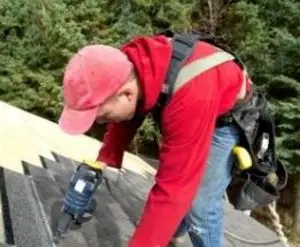If you’re looking for a job with a little bit of extra danger, you might want to consider a career requiring fall protection. From roofers to window washers, there are plenty of jobs where a slip and fall could mean serious injury or even death. But with the right safety gear, you can stay safe while you work. So if you’re not afraid of heights, check out some of the most dangerous jobs that require fall protection.
What is fall protection?
Fall protection is a safety system used to prevent or mitigate the consequences of a fall from a height. Fall protection systems can include a variety of components, such as safety harnesses, anchor points, and lanyards. Fall protection systems are used in various workplaces, including construction, warehousing, and manufacturing.
Jobs that require fall protection
The following jobs require the use of fall protection equipment:
- Roofer
- Window washer
- Ironworker (skyscrapers, towers, building complexes)
- Construction worker
- Windmill / solar worker
- Cell tower technician
- Powerline/utility worker
- Crane inspector / operator
Workers in jobs not listed above can benefit from wearing fall protection systems anytime they work at unsafe heights, such as gutter cleaning, home building, and chimney repair.
What are the OSHA requirements for fall protection?
In general, OSHA requires that employers provide fall protection for employees who are working at heights of six feet or more above a lower level. There are several different ways that employers can provide fall protection, including guardrails, nets, and personal fall arrest systems.
The specific fall protection requirements that apply to your work site will depend on the type of work being done, the height of the work surface, and other factors.
Some OSHA standards that apply to fall protection include:
- General Industry (29 CFR 1910)
- Maritime (29 CFR 1915, 1917, 1918)
What are some common fall hazards?
There are many potential fall hazards in the workplace, and it is essential for employers to be aware of them. Some common fall hazards include:
- Working at heights without adequate fall protection.
- Unprotected sides and edges.
- Openings in the work surface.
- Holes in the work surface.
- Slippery or uneven surfaces.
- Poorly lit areas
- Inadequate ladders
- Other fallen objects
Employers should take proactive measures to protect employees from these and other fall hazards. In some cases, this may require the use of personal protective equipment (PPE), such as harnesses and ropes. In other cases, it may require the use of engineering controls, such as guardrails or nets.
How can fall hazards be prevented?
There are three primary ways to prevent falls:
- Eliminate the hazard
- Use engineering controls
- Use personal protective equipment
Eliminating the hazard is the most effective way to prevent falls. If the hazard can’t be eliminated, engineering and administrative controls must be used. Engineering controls involve changing the workplace or work process to make it safe. Administrative controls involve changing the way work is scheduled or monitored. Personal protective equipment (PPE) is the last line of defense against falls.
What are some common fall protection systems?
There are many different types of fall protection systems, and the most appropriate system for a particular job will depend on the specific hazards present. Some common fall protection systems include:
- Anchorage points
- Guarded platforms or elevated workstations
- Harnesses
- Safety nets
- Safety lines
- Travel restraint systems
- Work positioning systems
- Fall arrest systems
What are some tips for using fall protection safely?
There are many ways to protect yourself from a fall, and the type of safety measure you use will depend on the job you’re doing. Here are some tips for using fall protection safely:
- Read the manufacturer’s instructions carefully before using any fall protection equipment.
- Inspect all equipment before using it. Look for frayed or damaged straps, cracks in helmets, and any other signs of wear and tear.
- Make sure you understand how to use the equipment properly. Training is essential for fall protection safety.
- Wear the proper clothing and footwear for the job. loose clothing can catch on to objects, and slippery shoes can make it difficult to grip a ladder or scaffold.
- Be aware of your surroundings at all times, and watch for potential hazards.
- Follow all safety rules and regulations to reduce the risk of injury.
What are some common fall protection mistakes?
There are many fall protection hazards in the workplace, and OSHA standards require fall protection whenever there is a possibility of a fall that could result in serious injury or death. Despite these efforts, falls are still the leading cause of death in construction, accounting for nearly 350 deaths each year.
One of the most common fall protection mistakes is failing to plan for and address potential hazards before work begins. Other mistakes include not using the right type of personal protective equipment (PPE) for the job, not inspecting PPE before use, and not properly securing equipment.
Another common mistake is failing to provide adequate training to employees who will be working in areas where there is a potential for falls. Employees should be trained on how to safely use fall protection equipment and how to identify potential hazards. Additionally, employers should develop and implement procedures for selecting, installing, inspecting, maintaining, and storing Fall Protection Equipment.
In Closing
There are many jobs that require the use of safety equipment and harnesses to prevent falls from occurring on the job. But using fall protection equipment is not limited to only those industries that require it. Anyone can enhance their safety when working at heights by wearing safety fall protection gear.

